In 2022, violence was a milestone for the Brazilian society. The year saw an increase in violence rates to pre-pandemic levels; attacks on schools; political violence that even led to homicides; murders due to environmental conflicts, mainly related to the Amazon Forest; in addition to the explosion of express kidnappings cases related to the PIX, the bank transfer payment method, built and owned by Brazil’s Central Bank.
Summer and Carnival in Rio de Janeiro– An Opportunity for Property Crimes
During the summer, Rio de Janeiro is one of the most popular tourist destinations in the country. In the period between New Year’s Eve and Carnival, the city has high temperatures and a large number of tourists. This condition attracts criminals, for whom there are plenty of opportunities. Incidents were reported as soon as the clocks struck midnight. During the fireworks show that marks the arrival of the new year, four people were stabbed by robbers. Robberies and thefts of cell phones and jewelry were the main crimes.
The rise in petty crimes led to the reappearance of angry mobs that wanted to make justice with their own hands. Many people were lynched. There were 12 cases recorded only on the beaches of the south zone during the summer. Crimes against property such as robberies, thefts and mass robberies continue to be the main ones, with no solutions in sight, despite the efforts of the public administration to reinforce the police presence on the waterfront during Summer.
Illegal Activities in the Amazon Rain Forest
After four consecutive years of increase, deforestation in the Brazilian Legal Amazon recorded, in 2022, a reduction of 11.27% compared to 2021, according to Prodes, a project carried out by the National Institute for Space Research (Inpe) that performs satellite monitoring of deforestation in the Legal Amazon. The data released indicate that the Amazon lost 11,568 km² of forests. Despite the reduction, the 2022 index is the second worst in the last 14 years.
In addition to deforestation, the Amazon also suffers from illegal logging, illegal fishing, drug trafficking, and animal trafficking. In 2022, Brazilian indigenist Bruno Pereira and British journalist Dom Phillips were murdered in the Javari Valley, in Amazonas. These brutal crimes summarized the years of violence and neglect in the Amazon anddrew attention from the world.
Experts say that the Lula’s administration is more aligned with the ideas of preservation. Thus, it is expected that the situation improves as the new managing style reaches the institutions responsible for environmental inspection in the region, like the Federal Police and Ibama.
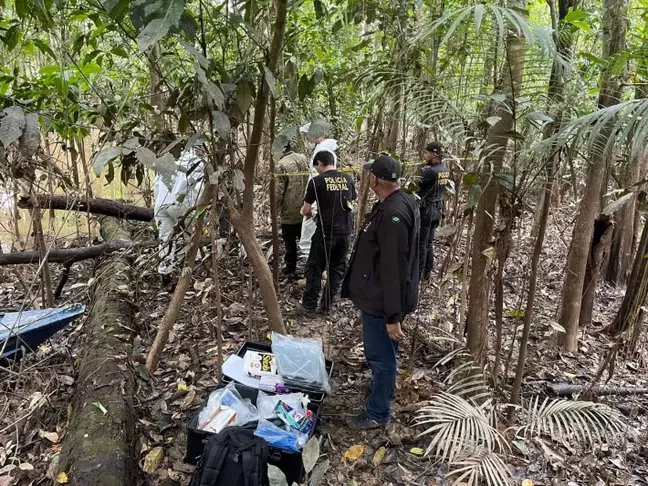
Drug Trafficking and direct consequences
Synthetic drugs are flourishing in Latin America. In Brazil, the use of synthetic drugs poppers, pink cocaine, krokodil and synthetic marijuana – known as K2, K4 or spice – has increased. They are mainly used by young people at parties, and they cause hallucinogenic and stimulating effects. Psychiatrist Camila Magalhães, founder of the Caliandra Mental Health center explains that the compounds attract young people for their effects of escaping reality caused by problems in coping with the post-pandemic world.
Another important point regarding drug trafficking is the use of the Port of Santos for the export of cocaine. It has become a crucial lynchpin for the global cocaine trade. Much of this growth has been due to the rise of the First Capital Command (Primeiro Comando da Capital – PCC), a powerful gang that dominates São Paulo, which efficiently extended its drug trafficking tentacles across the region, focusing especially on Paraguay and Bolivia. In doing so, the PCC controls several major cocaine trafficking routes, with the drug being produced in Bolivia and transported through Paraguay and Brazil to Santos, from where it goes to Europe hidden inside legal cargo.
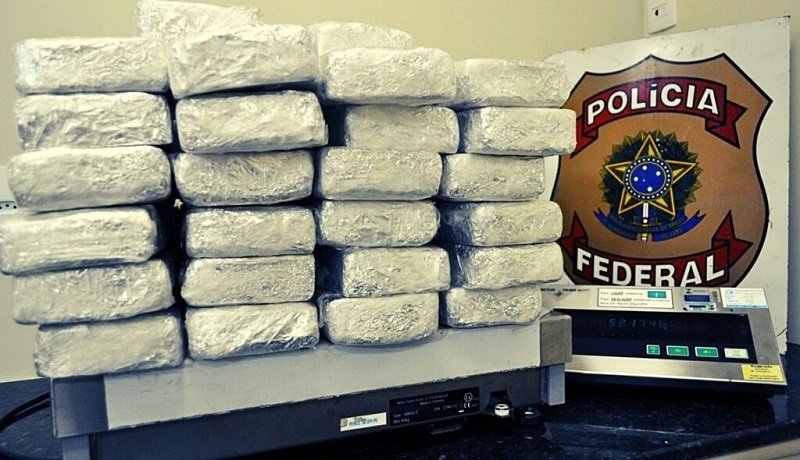
While large quantities leave through the Port of Santos, small quantities continue to be exported through airports, mainly Brasília International (DF), Guarulhos (SP) and Viracopos (SP).
Drug consumption in large cities such as São Paulo and Rio de Janeiro was also an important issue. In São Paulo, it was launched Operation Caronte, which intensified joint actions by the city hall and the state government in “Cracolândia”. As a result, drug users spread across the central region of the city. Data from the Secretariat of Public Security (SSP-SP) indicate that the 77th Police District (Santa Cecília), which covers a large part of the “Cracolândia” region, accumulated, from January to November, 4,244 thefts and 1,860 robberies. Which represents a 31% increase in thefts and 14% in robberies when compared to the same period in 2019, before the Covid-19 pandemic.
In Rio de Janeiro, however, surveys disclosed by media outlets revealed that there is not a single notorious “Cracolândia”. Instead, drug users have formed several hubs, normally around the communities where the drugs are sold. As in Mangueira, in Cajueiro, in Madureira, or on Bandeira Dois, between Del Castilho and Maria da Graça, in the North Zone, in Central do Brasil and in the Port Zone, in the center of the city and next to Pavão-Pavãozinho, in Copacabana, South Zone. In Rio statistics proved that the rate of petty crimes are connected to the presence of the “Cracolândias”. These gathering points where drug traffickers meet their clients will hardly disappear, since they are a consequence of the intense drug trafficking present in Brazil. Security forces have already made several attempts to remove them, but instead of disappearing, they change location, sometimes splitting into smaller hubs. The best approach is to stay informed about their addresses and to avoid them.
Wave of Cell Phone Thefts
Investigations point out that cell phones have definitely become the favorite target of criminals, who are interested both in the devices and their parts and in the data that can be used in the invasion of accounts, frauds, and extortions. In the state of Rio de Janeiro, 27,479 cell phones were stolen and 14,830 were robbed between January and November 2022. This represented more than 82 thefts and 44 robberies per day, according to data released by the Secretary of Public Security (ISP). Regarding thefts, this represented a 50% increase compared to 2019 levels, pre-pandemic.
In the city of São Paulo, the frequency of thefts and robberies in the downtown region increased. A survey carried out using data from the Public Security Secretariat of São Paulo shows that from January to November 2022, police stations in the area registered, the highest number of robberies since the beginning of the historical series, which started 20 years ago: 15,300 cases recorded in Campos Elísios, Sé, Santa Cecília and Consolação. The number of thefts has also been growing and has already reached pre-pandemic levels. The real numbers, however, are even higher, since cell phone theft is still an underreported crime. For this type of property crimes, prevention and mitigation continue to be the best solutions. People must avoid exposing cell phones while walking and driving. If needed, they should enter a store to talk, or use earbuds.
PIX Scam, Dating Apps, WhatsApp, and Express Kidnappings
The year 2022 was marked by a sequence of scams and, among the main ones, is the PIX scam. In this type of crime, people are deceived by WhatsApp messages or telephone and end up making transfers that are hardly recovered.
This new banking tool, which allows immediate money transfers without charging fees, also caused the increase of the number of express kidnappings within the country and especially in the state of São Paulo. The victims are kidnapped on the streets and held until all their money are transferred through quick PIX transactions.
The pandemic and the resulting social distancing intensified the digitalization of daily activities; hence swindlers take advantage of more unexperienced people online, and of the anonymous contact to reach more victims with new strategies.
In the following list, we remember the scams that spread across Brazil during the past year.
- Dating Apps
This type of crime can occur in two ways: in the first, the criminal seduces the victim online, alleges financial problems, and asks for loans through bank transfers. Then they disappear with the money. In the second, the subject is attracted to a meeting and forced to transfer large sums to the scammers.
In 2022, WhatsApp remained one of the biggest vectors of online scams. Frauds using the names of large companies such as Amazon and even government programs, such as Auxílio Brasil, made thousands of victims — the latter even surpassed the mark of 20,000 attempted attacks per day, the equivalent of 13 per minute. The information is from a recent PSafe survey. The fake job scam has circulated a lot. To deceive victims, criminals contact them offering a false part-time job proposal with attractive remuneration. The fake message contains a fraudulent link. When accessing it, victims are invited to give confidential information, such as ID number and bank details. Once with crucial information, criminals can take out loans on their victim’s name, buy things and more.
Another WhatsApp scam is the “Fake Profile” scam, in which the criminals create a fake account on the app using the victim’s picture, or they hack the victim’s profile, and then ask for money to the victim’s contacts.

- Express Kidnappings
In this crime, the victim is surrendered and taken to captivity or remain trapped in the car with the criminals. At the same time, criminals demand the delivery of cards, cell phone and all passwords so that they can make purchases, loans, and transfers via PIX.
Once more, information, prevention and mitigation are the key-procedures. These scams are always being updated, thus, to avoid them it is necessary to remain informed. If by misfortune, the criminal is successful, the suspension of accounts – bank, social networks – is normally the first step, followed by the reporting of the incident to the bank, to the police and to the phone operator.
Crypto-Crimes
The use of cryptocurrencies in the region has been rapidly rising. From 2017 to early 2020, Latin America and the Caribbean accounted for 6% of Bitcoins worldwide. In 2020, this climbed to 15.8% and has continued to rise since. Cryptocurrency scams renewed themselves in 2022, becoming more common and victimizing both individuals and companies. Also, the lack of regulation surrounding cryptocurrencies allows them to be used by organized crime.
The “Pump and Dump” investment schemes, in which criminals inflate a little-known currency and convince victims to buy it to cash in on its rapid appreciation, were among the scams that topped the list. In addition to it, fraud involving fake applications was also evidenced. In this type of scam, cybercriminals copy the layout of an original platform and make the fake app available for download on the Internet. When the victim downloads the program and enters their login details, this information is passed on to the scammers, who then gain access to the victim’s bank account. Fake exchanges, fake websites and fake brokerages offering cryptocurrencies at below-market prices were also techniques exploited by scammers in 2022.
Being a new technology, crypto currencies offer great risk, since people are not yet well versed about how they work. Moreover, there is a lot of fake information circulating, including promises of great profits. The best method to escape from such traps is to reject any offer from unknown sources and look for certified investors from reputable financial institutions.
Political Violence
Political violence is not new in Brazilian electoral disputes, but the issue has rarely become as central as in the 2022 national campaign, which was marked by several murders, intimidation attempts, attacks, and explosions of electoral harassment allegations due to political differences. While in previous elections most cases of political violence tended to be restricted to the local elections, many of the cases this year were directly linked to the presidential race between Jair Bolsonaro and Lula.
The two months leading up to the first round of elections were marked by a growing climate of political violence, which resulted in a total of 121 attacks, an average of two cases per day, according to a study released by Justiça Global and Terra de Direitos, non-governmental organizations of human rights, — showing an increase of 400% compared to the number of cases registered in 2018, when the last presidential election took place.
If both Lula and Bolsonaro can maintain their supporters faithful, and no new strong name appears to break the polarization, it is likely that the tense atmosphere will remain. With the end of the electoral process and the transition period, things tend to cool down, but new political events or the next elections can incite animosity.
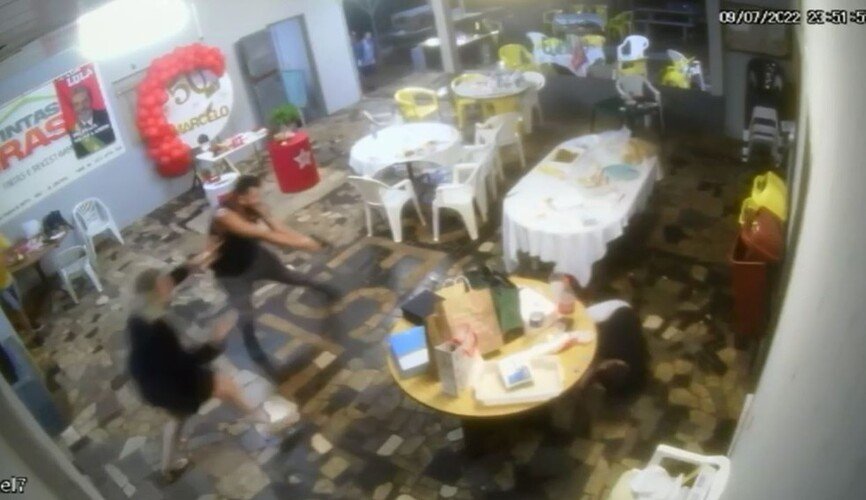
New Gun Rules
Since assuming the Presidency in 2019, a motto of President Jair Bolsonaro’s administration has been to facilitate the purchase of weapons by the population. The federal government has already issued 17 decrees, 19 ordinances, two resolutions, three normative instructions and two bills that make more flexible the rules for access to weapons and ammunition. In his administration, in addition to encouraging the common citizen to arm themselves, Bolsonaro gave the population access to more powerful calibers.
According to Instituto Sou da Paz, the number of weapons acquired by CACs (Colecionadores, atiradores, caçadores or collectors, sports shooters, and hunters) more than tripled from 2018 to 2022 with more than 1 million weapons in circulation. Another significant issue is the possibility of transporting the loaded weapon on the way from home to the shooting clubs. Public safety specialists saw these measures as a loophole for ordinary citizens to be authorized to circulate armed within the public space.
Another alarming fact is that inspection of the sector is flawed, especially among the CACs, which facilitates diversion of arms to criminal organizations. During the year ended, many operations discovered schemes built to legally buy weapons and ammunition and sell them to the organized crime.
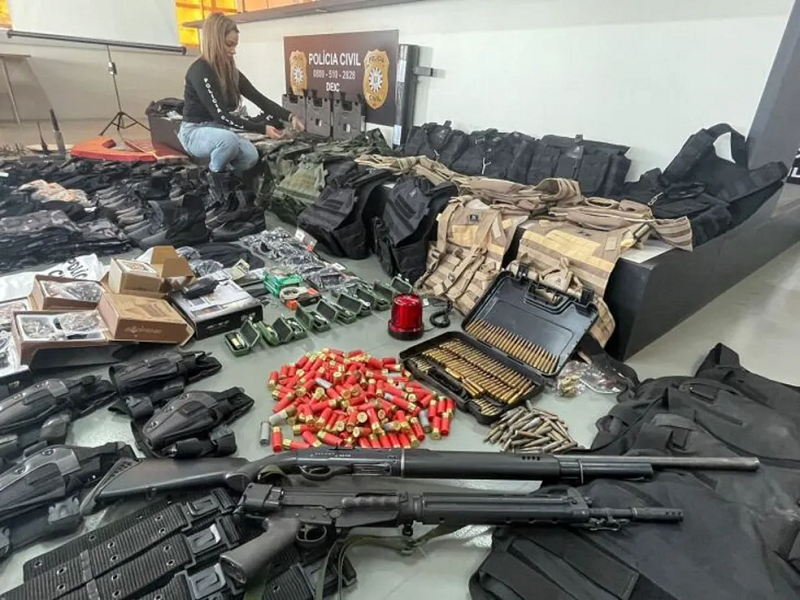
Experts warned that Brazil is beginning to collect cases of school shooters, for which the United States have become famous. In their vision, we should continue to see cases like this more frequently because of the recent facilitation to the acquisition of arms. In 2022 alone there were three cases: in Sobral (state of Ceará), a 15-year-old shot three students, one victim died. In Barreiras (state of Bahia) a 14-year-old teenager shot and killed a student in a wheelchair. And in Aracruz (state of Espírito Santo), three people died and 13 were injured when a 16-year-old student invaded, armed, two schools.
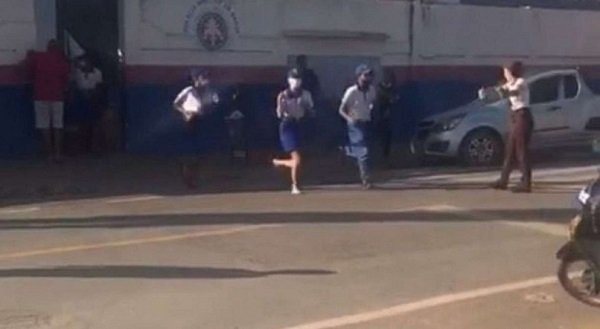
The new government of President Lula has begun to modify the arms policy of his predecessor. Lula’s administration has suspended the issuance of new registrations for shooters, collectors, and hunters, prohibited the purchase of automatic rifles and reduced their annual ammunition purchase limit from 6,000 to 500 cartridges. Hence, the new Government prioritized the repeal of measures aimed at preventing them from continue to benefit organized crime.




